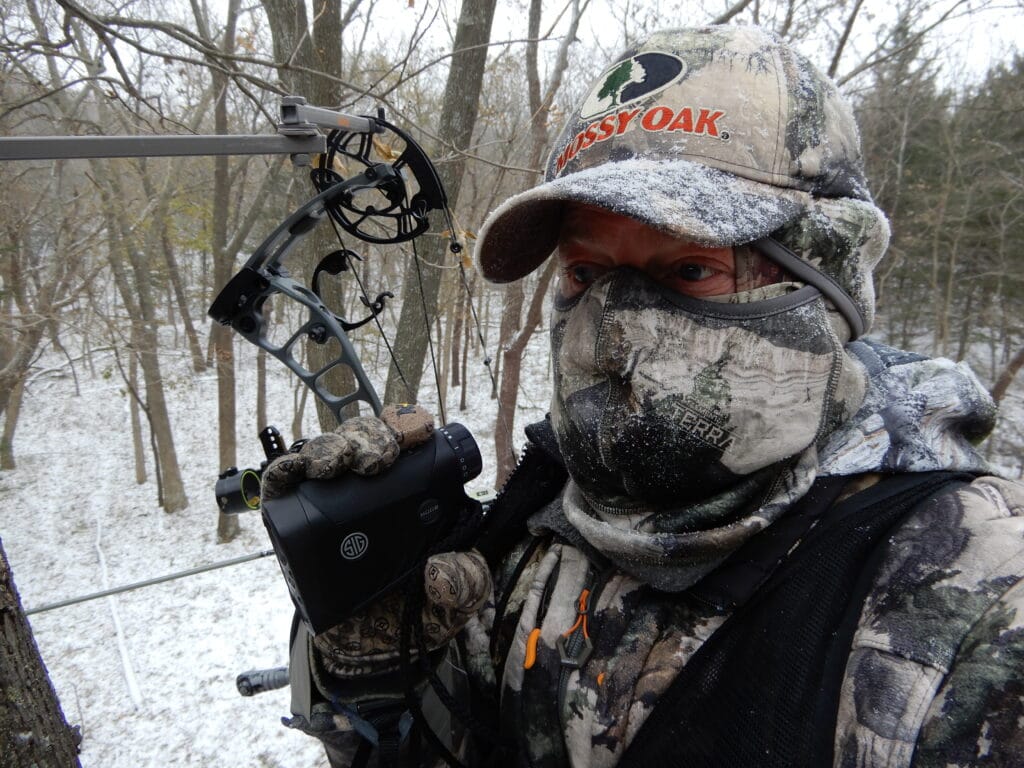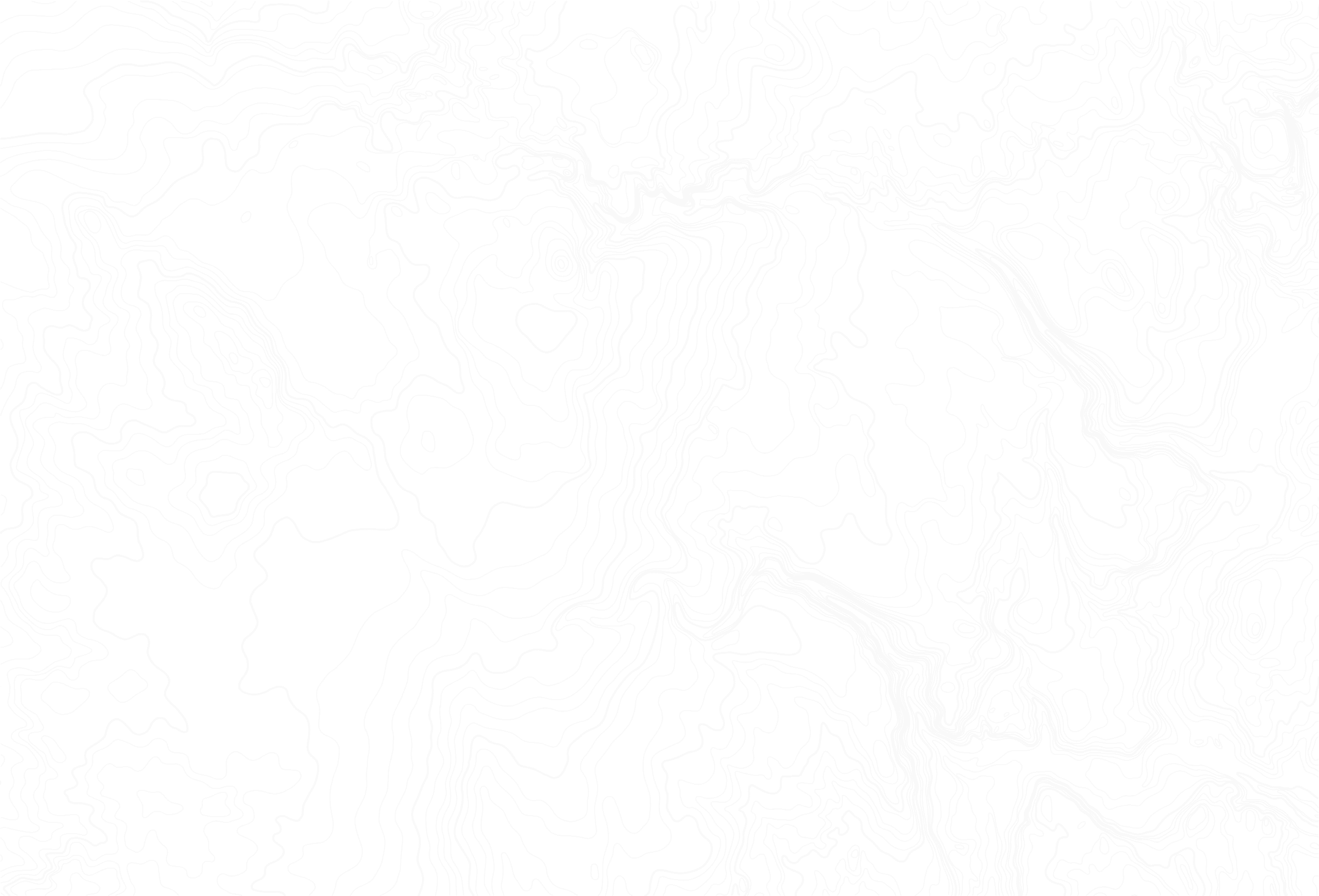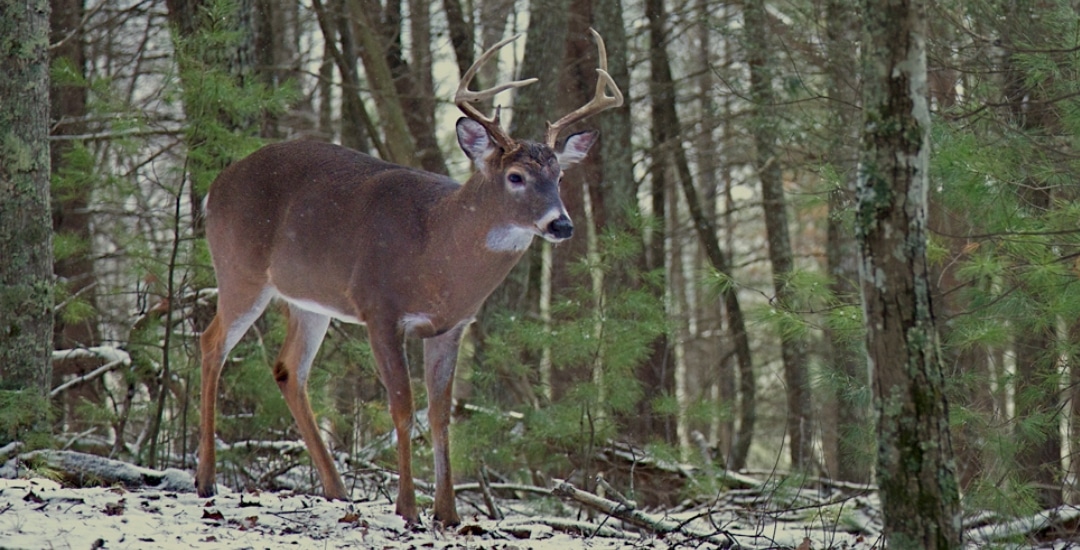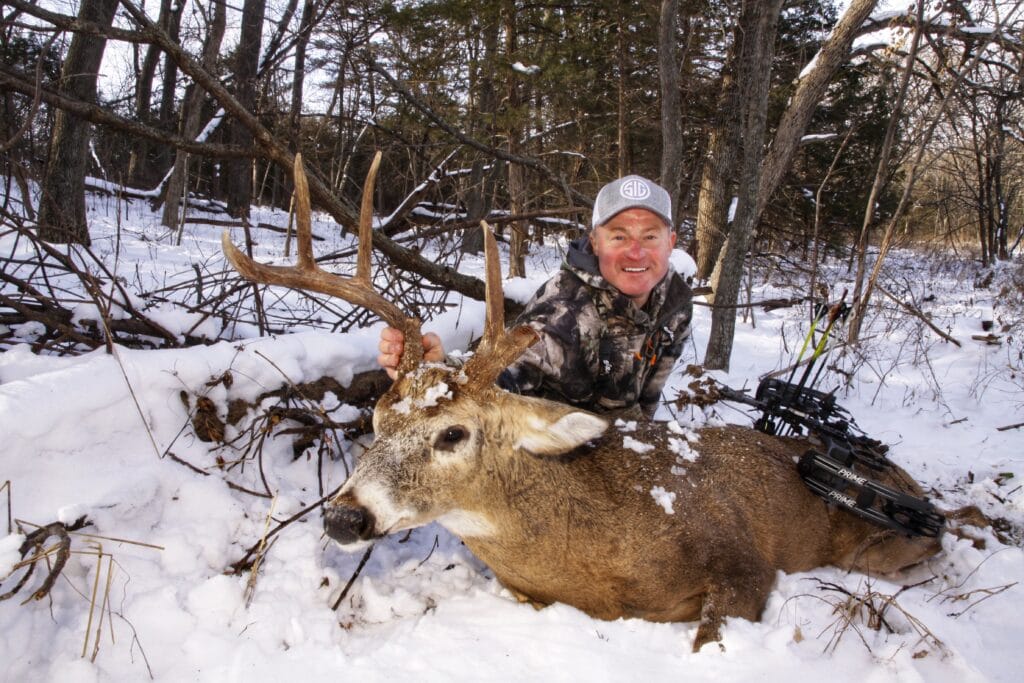Late-Season Tactics for Success
METEOROLOGY MATTERS
Become a weather watcher and plan your hunting time based on the forecast. In brief, look ahead for the worst of the worst regardless of your zip code. Plummeting temperatures, moisture and extremes bordering on blizzards force deer to feed during shooting hours, especially rut-weary bucks.
During the rut, bucks may lose up to 25 percent of their body weight. If they do not add or at the very least maintain body mass, death could occur. To plan, stay informed on 7- and 10-day forecasts. This gives you the advantage to plan your future hunting schedule around family and work for a better-than-average window of success.
Incoming low-pressure systems, descending masses of frigid air, blustery wind chills and other factors all prompt whitetails to feed with ferocity for survival
CONDO HUNTING
Whether you utilize a permanent, molded blind or a pop-up style, the protection blind walls provide over an exposed tree stand perch should be considered for December success. After a few days or weeks of being in place, most whitetails will not give a blind a second look. Stay away from windows and back in the shadows for a comfortable wait that also provides you with shot options on relaxed game too. You can even bring along a portable heater to boost the comfort.
In addition to warmth, both popup and permanent blinds help contain your scent. Combine those scent capturing properties with scent-elimination products.
ENERGY FOOD
Whether there is a storm bearing down or not, food will be your main target to find a willing late-season candidate. You may be able to set up directly on a food source or back up and watch a trail leading to it from bedding cover. Regardless, food equals energy for weary whitetails in the post-rut.
Whitetails feed and browse on as many as 20 different forage species a day. This continues throughout the year, but after the rut they put an emphasis on food that energizes. Crops to watch include favorites such as corn and soybeans, plus mast leftovers like acorns and beech nuts. Food plot favorites, like turnips, also attract late-season deer. Standing corn always should be a top attention getter as it not only fuels deer, but also provides winter refuge and a windbreak. Even if the harvest is complete do not overlook harvested corn and soybean fields. If snow depth does not hinder browsing, whitetails will still visit them to nibble for nutrition.
Your busy schedule may not allow you to scout nonstop in the late season. This is where a trail cellular trail cameras can virtually scout for you. Have real-time images sent directly to your smartphone to target food sources with precision.
POST-RUT PARTY
The main rut party may be over, but December and beyond offers some breeding distractions. Biologists have meticulously studied the breeding season. Most data suggests that nearly 90 percent of does are bred in the traditional rut window. That leaves 10 percent open to breeding after the November rut. If a doe goes unbred she will cycle into estrous again in approximately 28 days. Mark the peak rut on your calendar and if you have a tag left in December you may see a flicker of activity 28 days after the main rut.
Survival will top any extracurricular hookup searching, but if a buck does sense a doe coming into estrus, they will automatically toss common sense aside. Bring your calls, scents, and decoys for one last attempt at a surprise rutting buck in the late season. Even if an estrus doe does not surface, you may be able to fool a buck with a doe decoy, estrus scent and a bleat call.

DRESS FOR SUCCESS
Regardless, if you are hunting North Dakota or south Alabama, you need to dress for success. Subzero, snow, icy rain, and high humidity in the late season all can decrease the amount of time you can handle on stand. Think layers and plan accordingly.
Any working layering system should include a base layer, an insulation layer and a waterproof wrap. Begin by wearing a polyester base layer and dress light on the drive to your hunting property. Sweaty layers that do not have time to dry can add to shivering later during the hunt. Continue minimizing your sweat. Hike to your stand in light clothing and stow your extra layers in your pack to dress when you reach your stand to also avoid additional sweat.
Popular insulation layers should be relatively loose fitting and that includes your footwear. The reason for oversized garments is to create air space and that space becomes added insulation. To guarantee a dry day wrap your entire layering system in a waterproof and breathable garment. This keeps your other layers from getting wet, traps body warmth and deflects wind.
Follow this game plan and hopefully the deer will cooperate for one last opportunity in the late season.


Featured
Juicy homemade jalapeno cheddar brats are perfect for grilling all summer long. They’re packed with all the right seasonings and fresh ingredients, making them extra tasty.

Featured
MeatEater and Moultrie Mobile join teams to bring hunters closer to nature.

Featured
These wild turkey skewers are tender and smothered in a homemade teriyaki glaze. Wild turkey sometimes gets a bad reputation for being a tough meat but when prepared properly using the steps in this recipe, the results are amazing.




